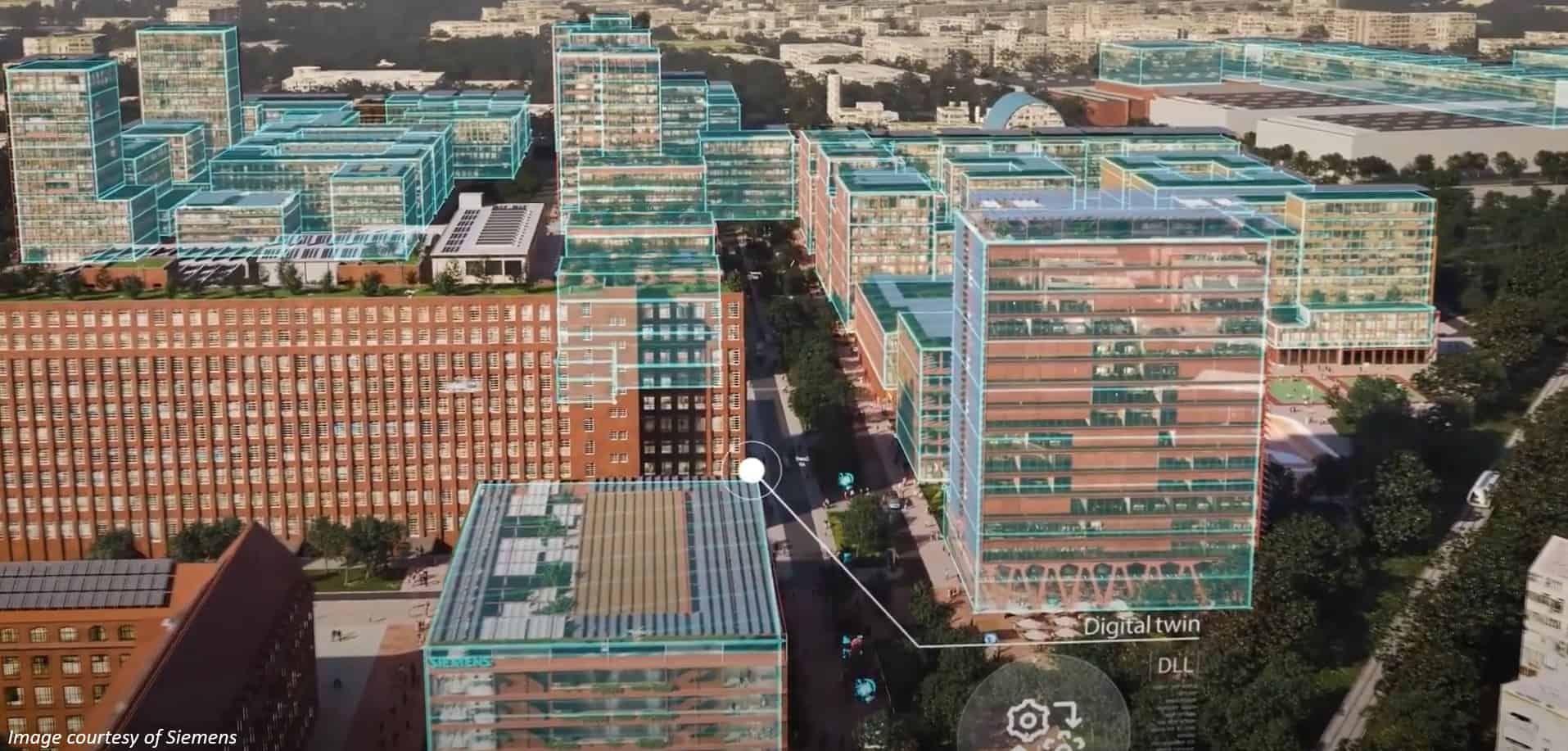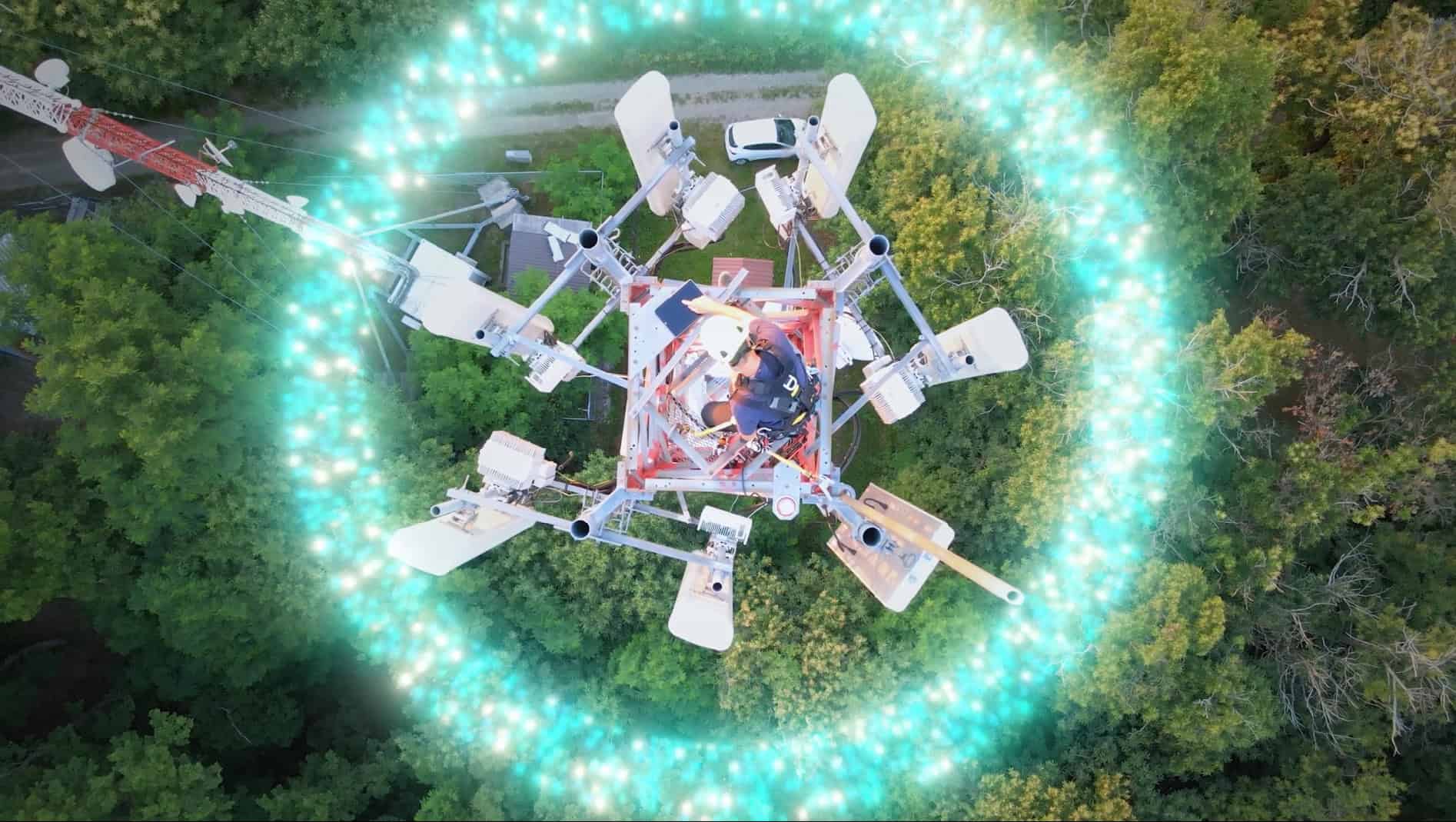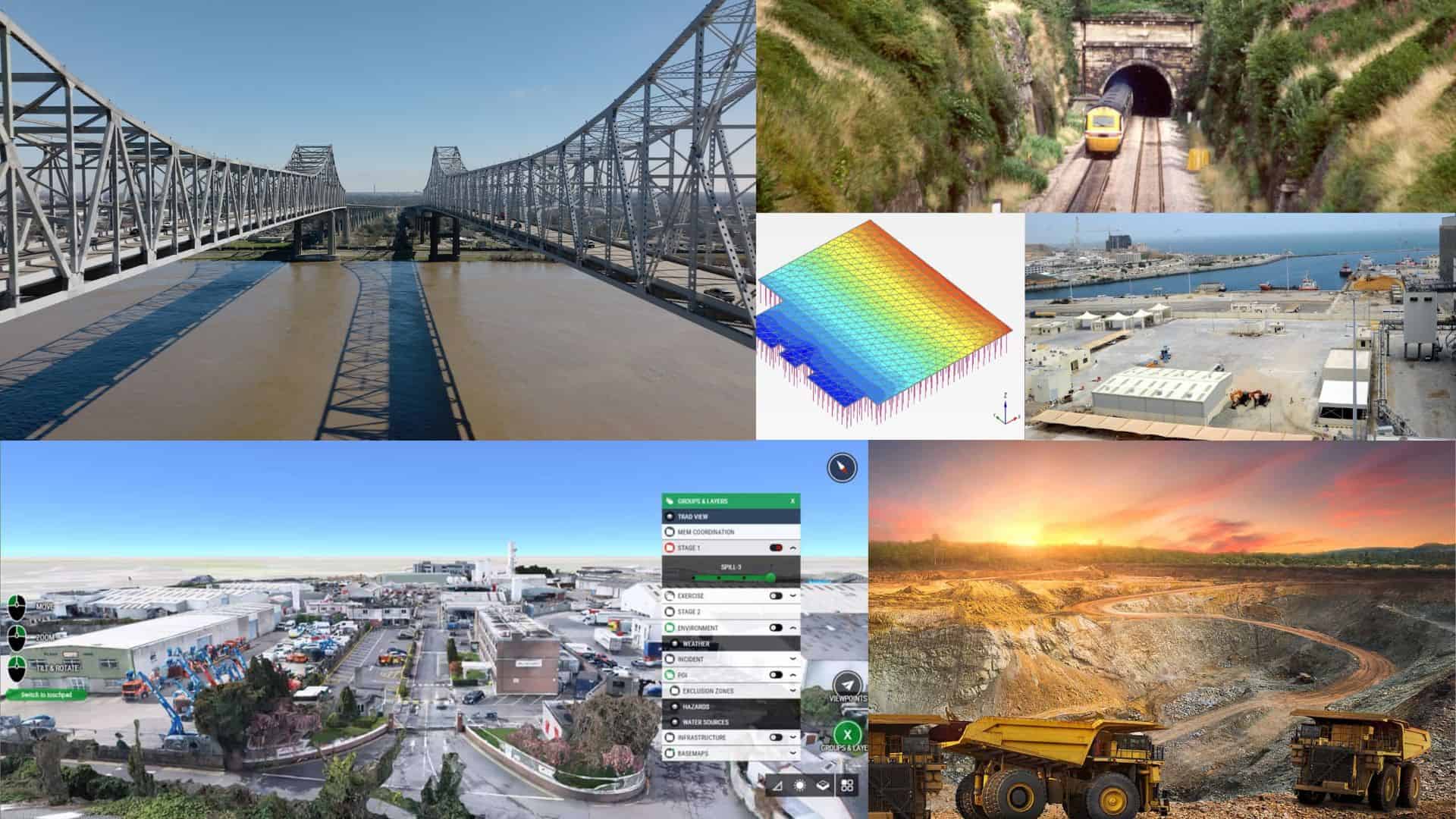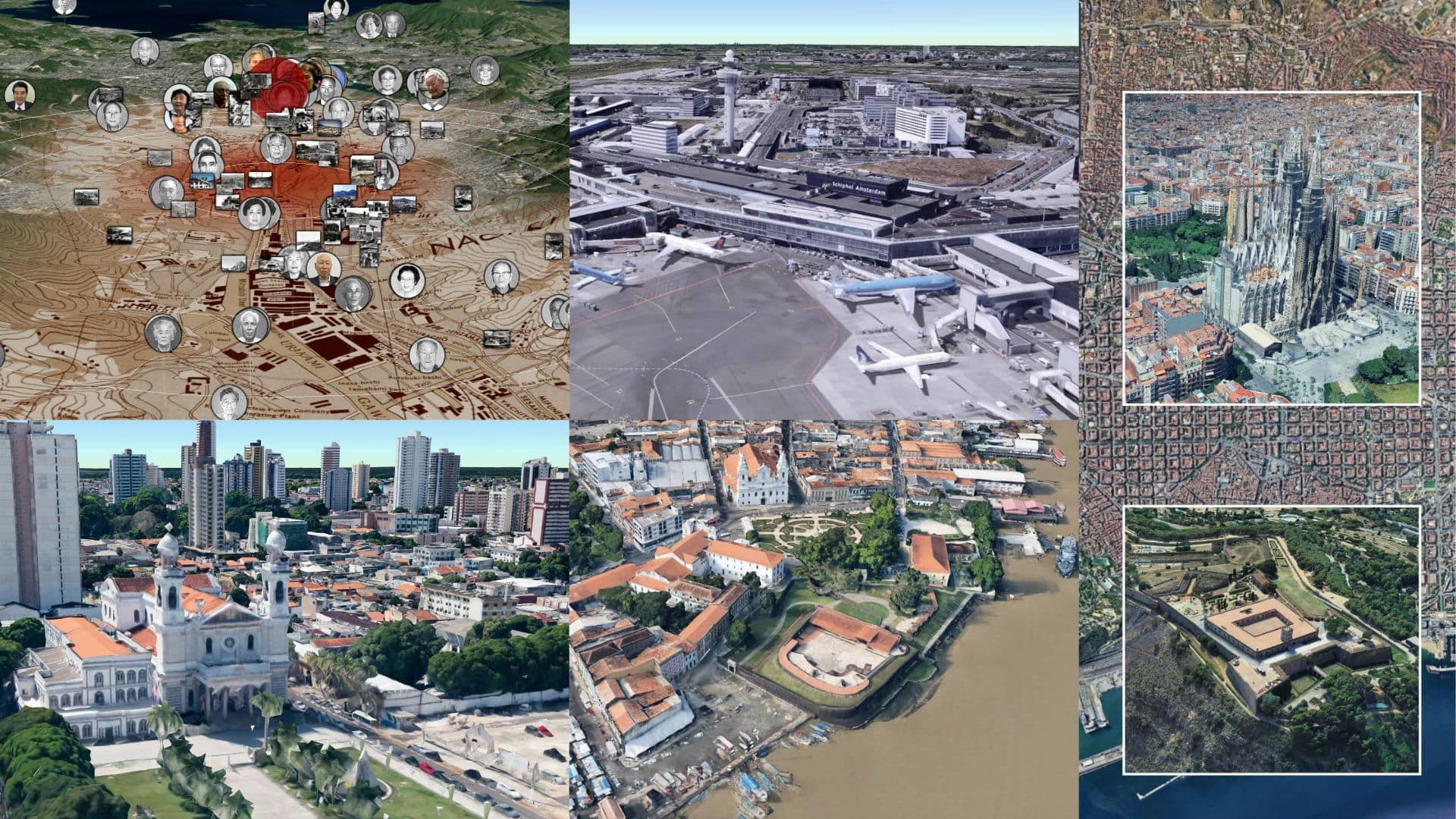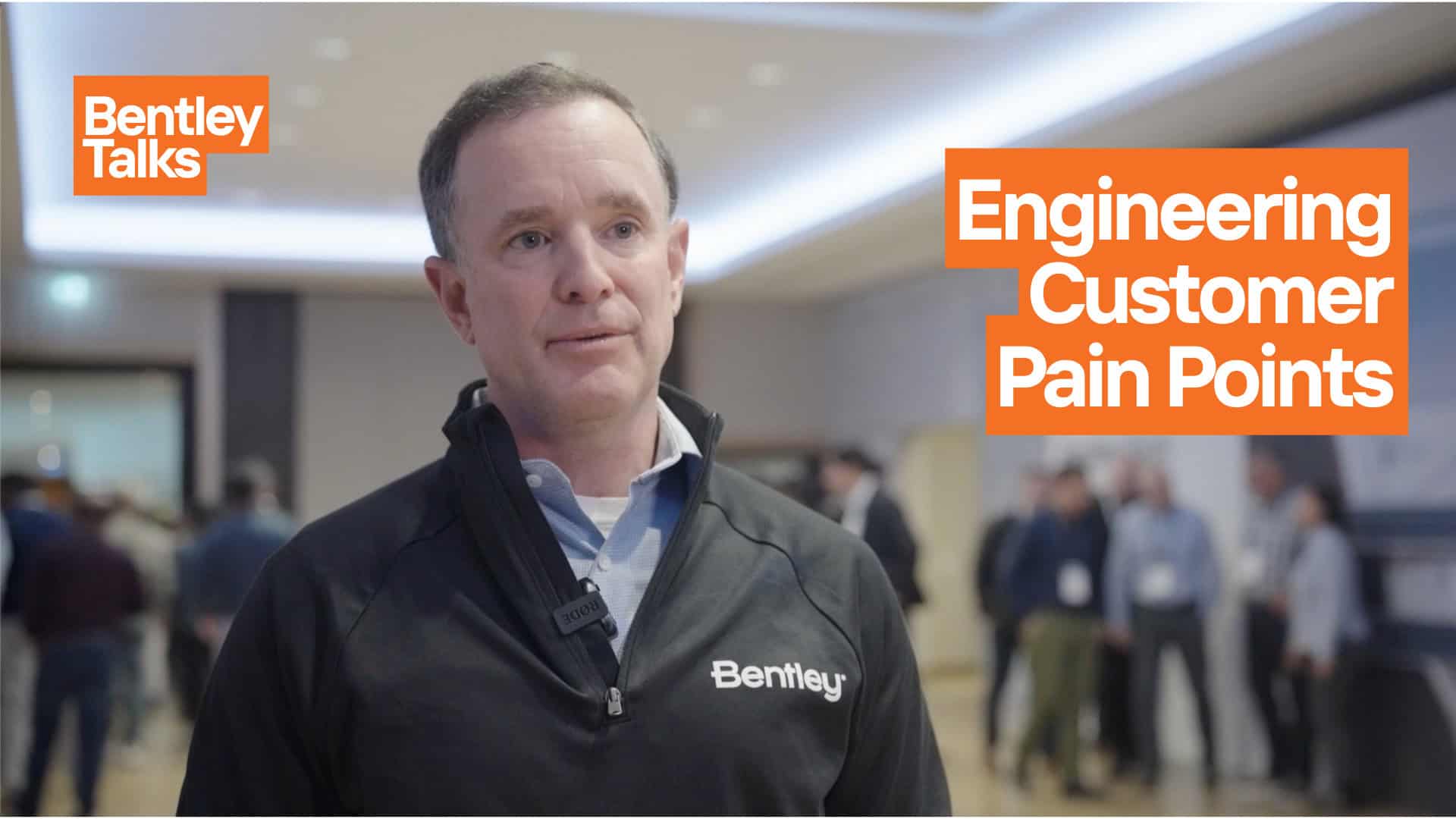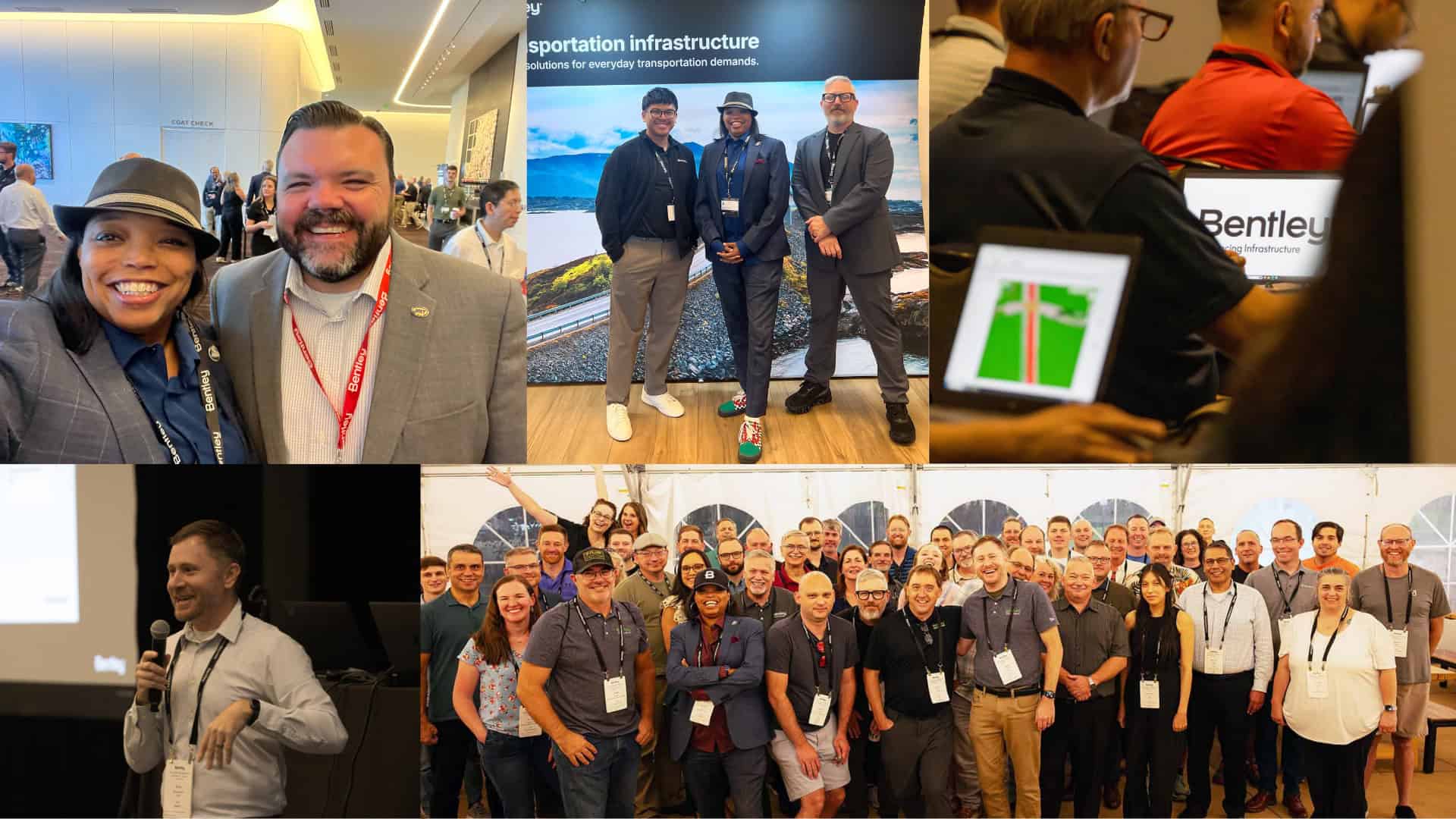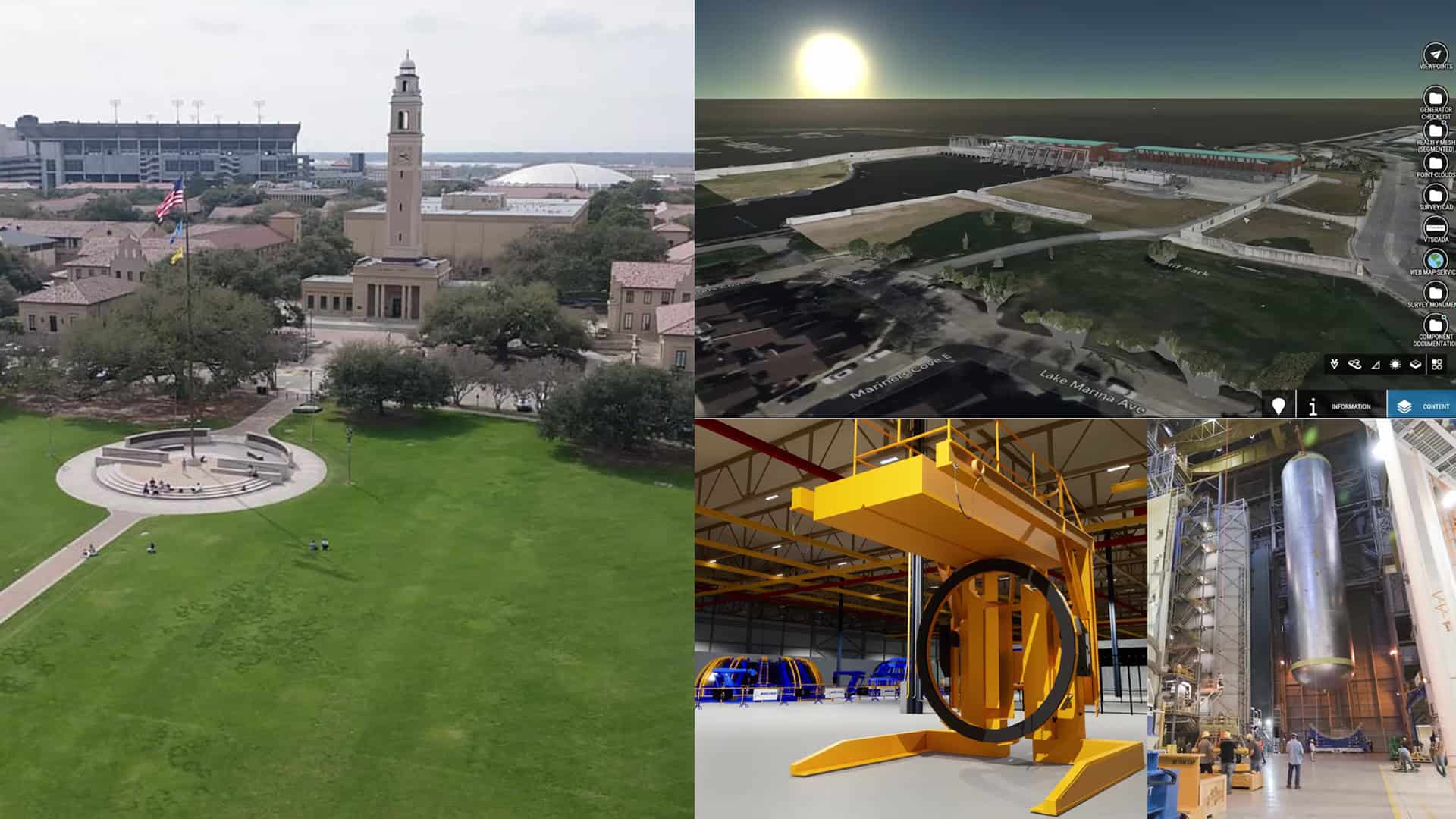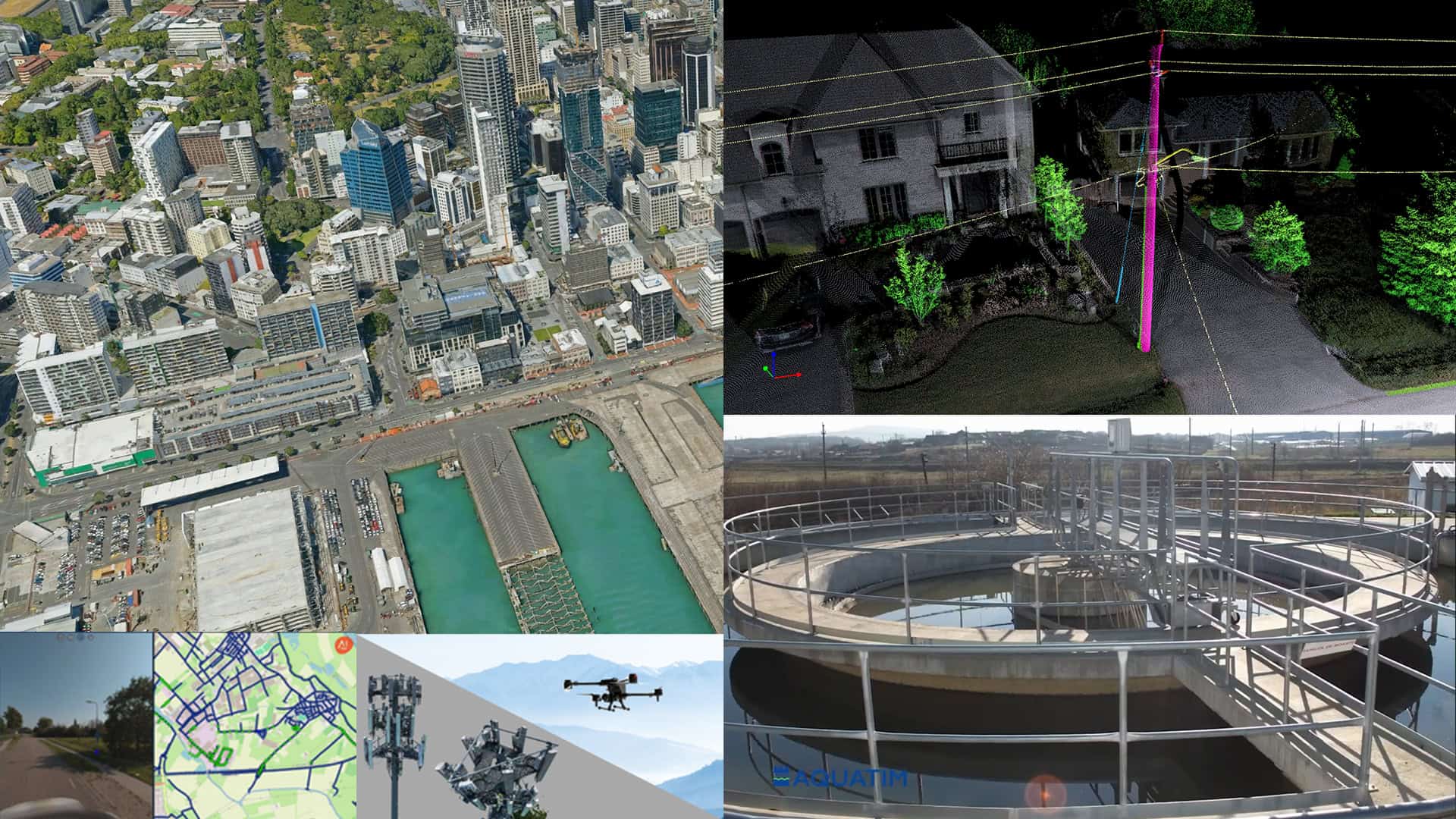Image courtesy of Siemens
I recently had the opportunity to discuss the Bentley partnership with Siemens and the role of digital twins in infrastructure at an event with Siemens CTO Peter Koerte. Bentley Systems and Siemens are collaborating on a massive project in Berlin, an entire city district of over 70 hectares called, appropriately, Siemensstadt Square (Siemens City).
Berlin is a city where cutting-edge innovation meets world history and Siemensstadt is another chapter in the city’s storied legacy. On the site where Siemens first purchased land 125 years ago, the company is developing a modern urban district. By 2035, this space will be occupied by industrial operations, commercial activities, research, education, and social infrastructure. The challenge is to create a sustainable, inclusive living environment while continuing industrial operation. It’s an exciting urban infrastructure project.
A Tale of Two Cities: Physical and digital
To achieve that vision, Siemens is building the district twice – first in the digital world and then in the real one. During the planning and designing phase, right through to construction and operations, a digital twin of the city will enable all stakeholders from engineers and architects to surveyors and construction workers to collaborate and connect. By giving the general public access to the digital twin, the city planners can also facilitate dialogue with the community, taking their concerns and ideas into account as construction progresses.
Better Decisions with Digital Twins
For a lot of people, the thought of infrastructure conjures images of people in orange jackets and hard hats.
Increasingly though, infrastructure is about data. When that data is accessible and shared on a single platform with everyone involved in the project, it can contribute to better productivity for individuals, teams, and entire organizations. On a grand scale, this is exactly what is underway at Siemensstadt in Berlin.
The teams working on the project use engineering data, operational data, and enterprise resource data to better design, build, and operate better infrastructure. This allows them to simulate and optimize all assets – roads, utilities, and buildings – during the planning phase, before construction begins. It enables them to make the best possible decisions and get the best possible outcomes, including to meet the district’s objective to be carbon neutral.
On a project of this proportion, with so many different stakeholders involved, coordination is critical. To ensure everyone from project planners to operations personnel, and the public have ongoing access to the project status, Siemens’ intelligent, digital twin campus is available in a web-based environment. And in this environment, you can see a 3D rendering of a state-of-the-art, open urban district. It’s collaborative, real-time, and immersive.
Shedding Light on Dark Data
Let’s get back to data because this is the heart of the matter.
The infrastructure sector is very file-centric. A file, after all, is the main deliverable of an architecture or engineering firm. The problem is that the data in that file is not easily accessible. It is siloed and in different file formats. It can grow stale and dark. It is estimated that in the infrastructure sector, 95% of data is neither accessible nor used. Decision makers are making under-informed choices about their infrastructure – because they lack visibility and insight. This is where digital twins come in. They allow us to crack open files, light up dark data, and view data in context. It allows us to bring data together from many different sources and align it with engineering-level precision and put it to work for engineering workflows.
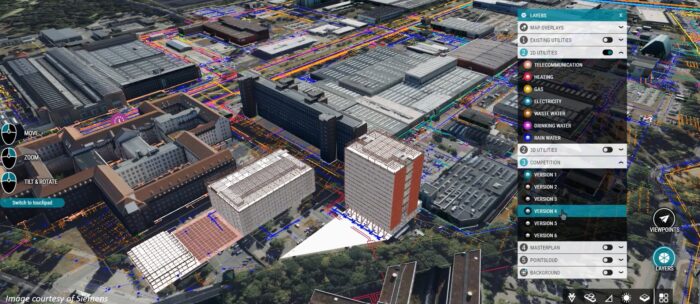 Digital twins surface aligned and accurate data to help make more informed and better decisions.
Digital twins surface aligned and accurate data to help make more informed and better decisions.Building Blocks of the Infrastructure Metaverse
But we can’t do it alone. Collaboration and openness in the ecosystem are key, which is why we are building strategic, long-lasting, and exciting partnerships with technology giants like Siemens. Our partnership goes back to 2016 when we announced our decision to co-develop and co-sell digital twin solutions for infrastructure. Our partnership is also about further exploring our joint thought leadership in technology. This was the focus of our discussion in Berlin, where we presented the outlines of the emerging infrastructure metaverse.
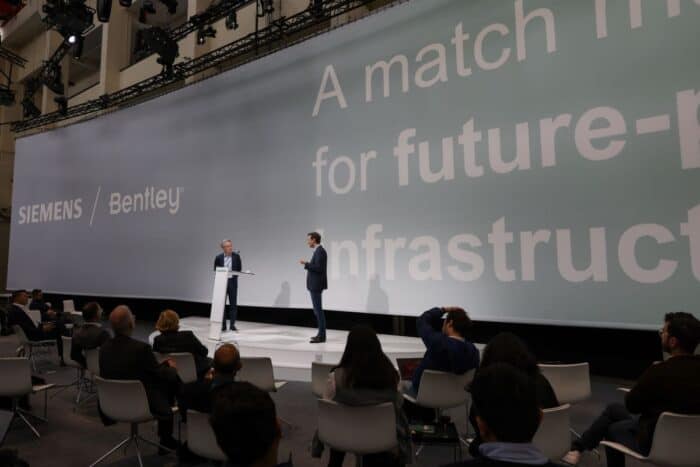 Bentley CEO Nicholas Cumins on stage discussing infrastructure digital twins and the metaverse with Siemens CTO Peter Koerte at a recent press event.
Bentley CEO Nicholas Cumins on stage discussing infrastructure digital twins and the metaverse with Siemens CTO Peter Koerte at a recent press event.According to McKinsey, over US$120 B have been invested in building out metaverse technology in 2022 alone. That is too big to ignore and suggests that the metaverse is inevitable. We don’t think the metaverse has arrived yet for infrastructure, but we can see its outlines:
- Immersive – a 3D, geospatial user experience
- Real-time – real-time interaction with real-time data
- Engineering-grade – no loss of data fidelity, so that it can be used in engineering workflows
- Always-on – the data is persisted, changes are tracked, you can roll back or move forward to predict and optimize
- Interoperable – the content is not trapped into one platform; the data can flow freely from one platform to the next
- Collaborative – empowering multi-user interaction.
Many of these “requirements” can already be addressed by infrastructure digital twins.
Infrastructure digital twins are the building blocks of virtual worlds that will allow groups to interact and collaborate to solve problems such as making infrastructure greener, more sustainable, and more resilient.
Siemensstadt Square is a great example of how digital twins can help design, build, and operate better infrastructure.
If we fast-forward to when the city will be completed, it will be monitored by sensors that measure energy consumption, water, and carbon footprint. The data collected will be able to provide predictive analytics and suggest where maintenance is needed. With a fully immersive digital twin, maintenance teams will be able to digitally rehearse the repair of a machine before going into the field, reducing risk and rework. When the team does go into the field, they will feel like they have been there already. With augmented reality, they will have access to relevant data when and where they need it.
This is how we see the future of Siemensstadt leveraging the power of interactive 3D infrastructure digital twins. That’s how exciting infrastructure can be.
Watch for yourself in this video below!

